
The sky is clear, the breeze is strong. A perfect day to make the long sea voyage to Mythyn. You prepare your galley, hire a crew of sailors, and cast off.
But a few hours into your trip, the dreaded words appear: “Thou seest rippling waters…”
Sea serpent? Giant squid? Something’s out there, and it’s headed your way.
So it goes in “Thieves’ Guild,” a unique BBS door game for the Atari ST.
Do you enjoy my retrocomputing research on Break Into Chat? Please join my email list so I can share future projects with you. 📬
For me, the quest to play Thieves’ Guild properly has been my own 7-year voyage, something akin to Captain Ahab chasing the whale.
Though Thieves’ Guild debuted for Atari ST BBSes in the early 1990s, I didn’t learn of its existence until 2013, which means this post will be unlike previous installments of my “door game memories” series.
I came across Thieves’ Guild as I was researching graphical front-end clients for BBS games. I was astonished to find that someone had created one on the Atari ST, my favorite computer platform, and I quickly became obsessed with finding a way to play it. If you’re so inclined, you can read about my quixotic quest to run the TG front-end client years ago.
In the years since, I’ve made many attempts to play the game, most of which fizzled out. But today, finally, I can say that I have completed it!
So let’s talk about what makes it unique, what I enjoyed, and what was tedious — but with the obvious caveat that I played this game 30 years after its heyday.
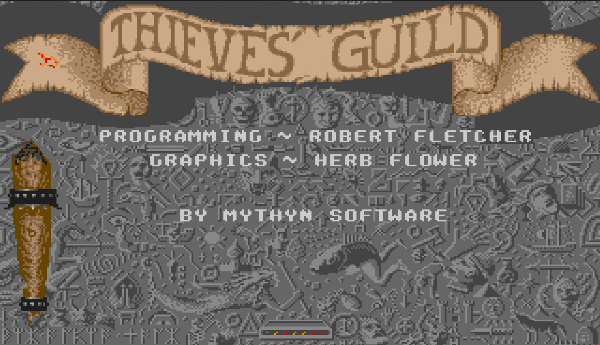
The game
Paul Witte wrote Thieves’ Guild beginning around 1988, using Personal Pascal for the Atari ST.
Initially Witte hosted the game on his BBS, Dark Fortress, where friends and acquaintances in Utah play-tested it and gave him feedback. He released it as shareware in 1993, and sold about 100 registered copies to sysops.
But that wasn’t all — Witte and his primary collaborator Herb Flower, also released a graphical front-end for Thieves’ Guild in 1993.
Flower, a talented pixel artist, drew dozens of backgrounds and animated sprites for the front-end, such as the three temple images above. He also created a detailed paper map of the game world, which they sold to users.
Myron Crandall, another collaborator, later ported the game to Turbo Pascal on the PC. While a PC version seems to have been completed in 1995, it appears to have been used on only one BBS, and was never publicly released.
The setting
Thieves’ Guild has many of the trappings of other text-based BBS role-playing games set in medieval times such as Legend of the Red Dragon or Assassin. Like Assassin, it uses deliberately archaic language to make you feel like you’re in another time. Like LoRD, you must face a dragon at the end of the game.
On its face, the game seems simple: You are a thief and you want to increase your skill and steal as much loot as you can. But there’s a lot more.
TG is in fact a meta-BBS game. Its hefty 1,500-word backstory establishes the premise that your player character is a BBSer who one day is sucked through a vortex into another world. You land on Rogues’ Isle where you are recruited by the Master Thief, who assures you there must be a portal back to Earth. To find it, you will have to solve many quests and navigate mazes, in addition to fighting and stealing from almost everyone around. Once any player on the BBS successfully resolves the final quest and goes through the portal, the game will reset, and that player’s name will be added to the “Masters of Riddles” screen to memorialize the achievement.
You begin on the Rogues’ Isle, which is just one small part of a large world of interconnected towns. You travel between them by boat or by horse. Each town has the staple locations you’d expect — tavern, inn, jail — but most towns also have one unique location such as the Temple of Balor, the Torture Chamber, or the Silver Pyramids.
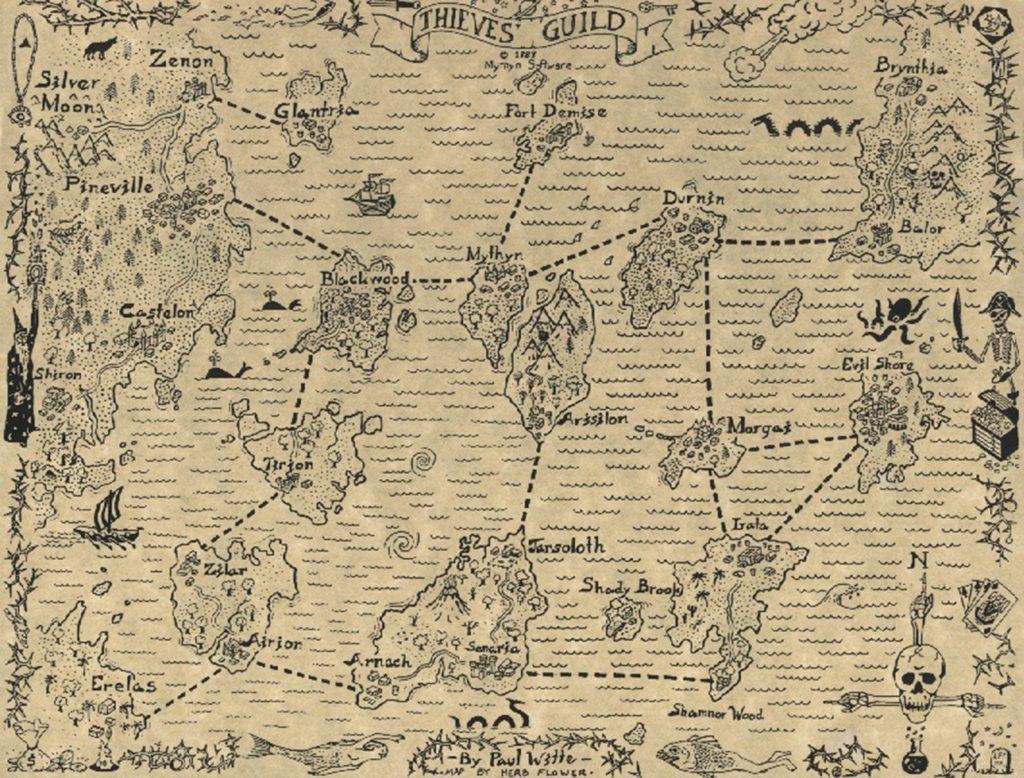
The world is complex enough that Flower drew an extremely detailed paper map showing all the locations, with illustrations that offer hints toward solving the quests. Witte sold copies of this map directly to users, and advertised its existence within the game. It’s very much like an Infocom “feelie” that adds to the depth of the game. I have a low-resolution scan of the map, and I found it essential when I was playing. Without it, mapping the game world on my own would have taken an enormous amount of time (more on why later).
Getting hooked
The thing that makes TG special among BBS games is its graphical front-end (which they called the “Thieves Guild Emulator”). When you play in a traditional ASCII, ANSI, or VT-52 terminal, the game looks much like any other text-based BBS game. But if you install and run the graphical front-end, the experience is greatly enhanced.
First, you hear a voice say “Welcome to Thieves’ Guild.” Then you see the title screen. It’s fantastic, animated pixel art. A torch flickers, mounted to a gray wall covered with detailed glyphs of skulls, ankhs, mermaids, wolves, and other things. The flames of the torch burn a slowly-expanding hole in the parchment “Thieves’ Guild” banner across the top. The text of the credits dissolve and reform as Old English runes. This opening screen, so full of small thoughtful details, made a huge first impression on me. I had never seen such well-drawn pixel art in any other BBS-related project or front-end client.
What do I mean by a “front-end client?” I wrote about this at length last week, but in brief: It’s an enhanced terminal program designed to work with one specific BBS game. Normal terminal programs would render only text and symbols on an 80-character, 25-line screen. But some BBS game authors wanted to offer an experience more like a video game with detailed pixel graphics, animation, or sound. Their solution was to develop their own custom terminal programs that could display such graphics when they received special codes from a specific game. And that’s exactly what the “Thieves Guild Emulator” does.
Keep in mind that most BBS games were pet projects of individual programmers. Often they were middle-aged men with regular jobs and families, coding during stolen hours at night. Sometimes they were teenagers, teaching themselves how to program by writing the game. But seldom were these programmers also skilled pixel artists.
That’s why the title screen of the TG front-end client captivated me. I hadn’t seen anything like it among other BBS games. It spurred me to keep going over the years to find, first, a way to use the TG front-end client successfully; and second, to play a sustained game where I didn’t die if I had to stop playing for a while.

The front-end
What is it like to play TG in the TG front-end client? For a modern-day user, it is both delightful and a little bit of a let-down.
This client was designed to overcome limitations of the Atari ST. The ST’s 80-column mode can display only four colors. In the front-end client, most menus are displayed in this 80-column text mode. But when the front-end wants to display an image, it will change to low resolution in order to use 16 colors. Consequently, any text that appears on screen with an image will use the Atari ST’s wider 40-column font.
Each location in the game gets its own small 160×100 image, on top of which sprites might be placed. These images are customized from town to town, depending on conditions in the game. For example, if it’s midnight in the town square, the front-end client will adjust the color palette of the image to make the image look like night time.

If it’s raining in the town, then you will see animated white pixels move across the scene. The sea coast images have little tree sprites that are positioned differently from town to town. If a storm is coming, the sky will fill with clouds, and they will gradually darken.
Wind is important in Thieves’ Guild, as it determines whether you can sail, and how successful your sea journey might be. The various wind speeds are reflected in the movement of rain or snow.
Gameplay and menus remain text-based, exactly the same as they would be in a normal terminal. You press “3” to enter a tavern, for example. When fighting an opponent, you press a number between 1-6 to choose what type of attack to make, then press a letter corresponding to a part of the body to target.
In the front-end, though, when an event takes place or you encounter a person or monster, the front-end will switch to low resolution and display an image with a sprite on the top half of the screen. The bottom half is reserved for text. Each NPC’s sprite has a few frames of simple animation. The sprites are not controllable and do not walk or fly across the screen — this is still a turn-by-turn BBS adventure, not a video game.
Combat is where sound and animation get the most immersive. As you fight, there are animations for when you hit hit an opponent, when they take attack you, when they fall to the ground, and for when they are killed. I have commented before about the death animation: it’s a short, vivid animation of the character disintegrating into a bloody pulp (or a pile of bones). Each character has a unique sound effect. For example, wizards yell the incantation “Ful nox or!” when attacking; some characters scream “Please, no!” when they are near death — and the game gives you a chance to spare them.
The graphics, animation, and sound in the Thieves’ Guild front-end were impressive enough to catch CompuServe’s attention. Witte told me in our interview that they entered negotiations with CompuServe to potentially license the game and adapt it for their platform. On the day I published this article, I stumbled across evidence of this within the source code for v2.5b of the game:

The struggle
What tripped me up for so long while trying to play Thieves’ Guild were some fundamental aspects of its design. Like most BBS games, it is meant to be played daily for weeks or months. It is turn-based, with a daily time limit: you get a maximum 24 real-world minutes to play, corresponding to a 24-hour day inside the game. Many common game actions will eat up these turns faster, such as traveling to a town or sleeping to recover stamina. And, like other BBS games, the game will delete your character for inactivity if you don’t log in for 10 days.
Such limits were necessary during the dial-up days of the 1990s, when BBS games were played asynchronously. Turn limits ensured no one player could lock up the game (and the BBS) indefinitely. Disk space and memory were at a premium, making it necessary to restrict the number of players and to prune out inactive players regularly.
But as a modern-day player, these limits are extremely frustrating. For several years, I found it difficult to really dig in and make sustained progress playing Thieves’ Guild on the Dark Force BBS.
Early in the game, you hang out in the initial town, Arisilon, which is home to the Thieves’ Guild. You spend time stealing and fighting in the town, or training in thievery at the guild. As your skill increases, you get better armor and weapons. You’re trying to earn enough money to buy a horse and a boat so that you can travel to other towns.
But even at this early stage, gameplay can be frustrating. When you are inexperienced, it’s very easy to be caught while stealing. Unless you pay $500 bail, you get thrown in jail, which means you can’t play for at least one real-world day. Traveling between cities, which is essential to solve quests and finish the game, will eat up most of your turns in a day.
This is also one of those games where you have the tedious task of managing your character’s hunger, thirst, and rest. I often found myself spending turns buying food or sleeping when I wanted to be out exploring the game world.
You can see, then, how hard it would be to progress — and how easy it might be to lose all your hard work if real life kept you from BBSing for a while.
The game does have some built-in answers to these issues. There are magical items you can discover which will give you infinite food or drink, for example. But it takes a lot of work and time to find them.
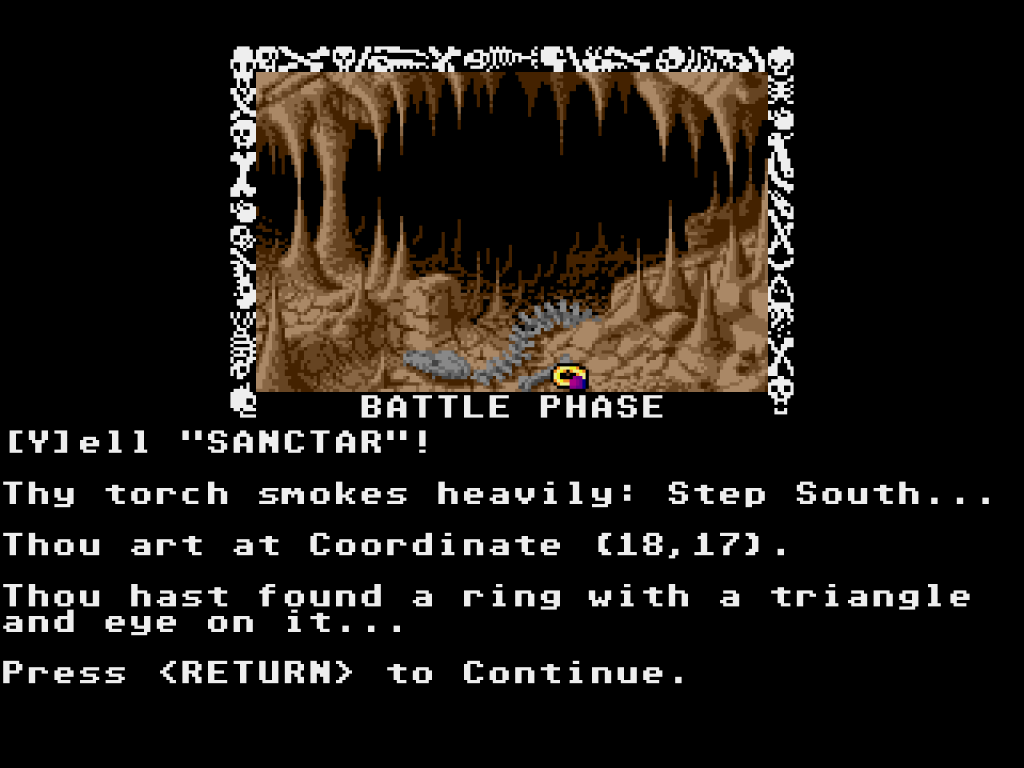
How did I get past these obstacles? I recovered the source code from the original disks, sent to me by Paul Witte. Using the source, I compiled my own registered copy of the game so I could run the game at home on my Mega STe. Since I had direct access to the game’s files, I could edit my user data file to replenish my turns and keep playing indefinitely during those windows I had time to play.
(Interestingly, the Thieves’ Guild documentation advertises a “standalone” version of the game that would let users do precisely what I wanted to do — play locally without time limits. Witte has told me the standalone version did exist, and that he did sell it. But so far he hasn’t located the disk that contains the standalone game. But with Witte’s permission, I am now sharing the Thieves’ Guild source code with the community. Maybe someone out there might try to build a new standalone version of the game using the original codebase)
Having access to the source also meant I could cheat. I figured out how to edit the user data file to enhance my stats, or to move to a specific town without spending turns traveling. When I got stuck on a quest, I could browse the code to look for hints or answers.
Better with two
This game, like almost all BBS games, was meant to be a social, multi-player experience with deception, alliance-making, and back-stabbing.
It’s clear that Witte and Flower had a strong community of players on their local BBS in those early years, and I imagine the game got quite competitive.
In the early 2000s, Witte resurrected the game for a brief time on a telnet server and got many of his old players to play again. They discussed the game on a message board where they shared tips and strategies, some of which were useful to me when I played.
Unfortunately in my case, I was usually playing alone, even when I played on Dark Force BBS. It was often a lonely experience.
But in recent months my son joined me a few times, after I had obtained the source code and began making progress. He’s 10 years old and easily amused by silly jokes. The tavern in the game has a “talk to the bartender” feature, which is essentially like the “page the sysop” function offered by BBSes that allow a user to chat in real-time with the sysop. For the “bartender” chat, the game asks the sysop to play the role of bartender and and to write to the player in Old English-isms.
Once I compiled my own registered copy of TG, I installed a private BBS on my Atari Mega STe so I could host the game. Then, using the Hatari emulator on my Mac, I would connect to this private BBS and play the game. When my son was around, he’d sit at the Mac as the player, and I would get onto the Mega STe and be the “bartender.” We’d spend 15 minutes chatting and trying to come up with one-liners to make each other laugh. It was fun to share that experience with him, and it was a throwback for me to my BBSing experience in the 1990s.
The endgame
When I interviewed Witte and Flower in May, Witte talked about the game’s conclusion. He said they had crafted a cool final sequence in the graphical front-end, but they were unsure if anyone had ever witnessed it.
Well, four months later, I can say that at least one person has witnessed it: me.
And it was pretty cool! The sequence is short, but cinematic.
Beware — I’m going to discuss the ending, and I have included a video you can watch if you feel like spoiling it. But remember — this game is still online today. If you want to play it unspoiled, skip to the final section below.
SPOILERS FOLLOW.
The final quest is to open the northern silver pyramid in the town of Silver Moon. You first must obtain a bunch of magical items, which will take you back and forth across the entire map. You must kill the evil magician Zolar, kidnap Princess Moonshade, and much more. Eventually you’ll obtain an “Elvin Whistle” and the “Key of the Ancient Ones,” which unlocks the pyramid. The solutions to the puzzles for obtaining these items are not obvious, but the game offers tons of hints. Ask NPCs for advice or to talk to NPCs in the taverns — and take copious notes.
The interior of the pyramid is a maze, very similar to a maze set in a cave earlier in the game. The pyramid maze is harder to map than the cave maze, though. In the cave, Thieves’ Guild conveniently provides coordinates each time you move to a new room. The final pyramid maze affords no such luxuries. And it’s full of dead ends. I mapped both mazes using Apple’s Numbers spreadsheet, though my pyramid map is incomplete because I found the portal about halfway through my exploration.
Navigating these mazes can get tedious because random battles occur frequently. In the pyramid maze, though, it’s slightly more tedious because your opponent will always be a wizard, whereas in the cave there are several possible opponents. The wizard’s outfit changes color (usually yellow or red), but otherwise it’s always the same.
Once you find the room with the portal, you will see a trippy, swirly pink vortex, guarded by a dragon. The dragon will let you through the portal if you can answer one question: what is the name of the “fairy world” in which you have been playing for so long?
When confronted with this question, I was completely stumped. I checked the documentation, checked my notes. I had not run across the answer previously (I should have asked more NPCs for advice). So I chose to cheat by checking the source code. But there is a fairy who appears at midnight under certain conditions who can tell you the answer.
If you answer incorrectly, you instead must battle the dragon. If you answer correctly — or if you answer incorrectly but win the battle — you get to go through the portal. The front-end client shows an animation of your silhouetted body falling slowly into the portal, and then it displays the concluding text, followed by a congratulatory message from Witte.
It was pretty awesome to see this. Sure, I wish I had completed the game on my own with no help or cheats. But after seven years, I was really impatient to finish it!
Playing it today
There is at least one BBS still hosting Thieves’ Guild: Dark Force BBS.
You can use any telnet client to connect to the BBS and play it in ASCII mode.
But for the full graphics-and-sound experience, you really should download the Thieves’ Guild front-end client and install it in Hatari. Once you’ve done that, you can follow my updated tutorial, on using tcpser to let terminals inside Hatari telnet to BBSes.
Did you play Thieves’ Guild back in the day? Have you tried it recently? Please share your experiences (or questions) in the comments. I’d love to hear from you.
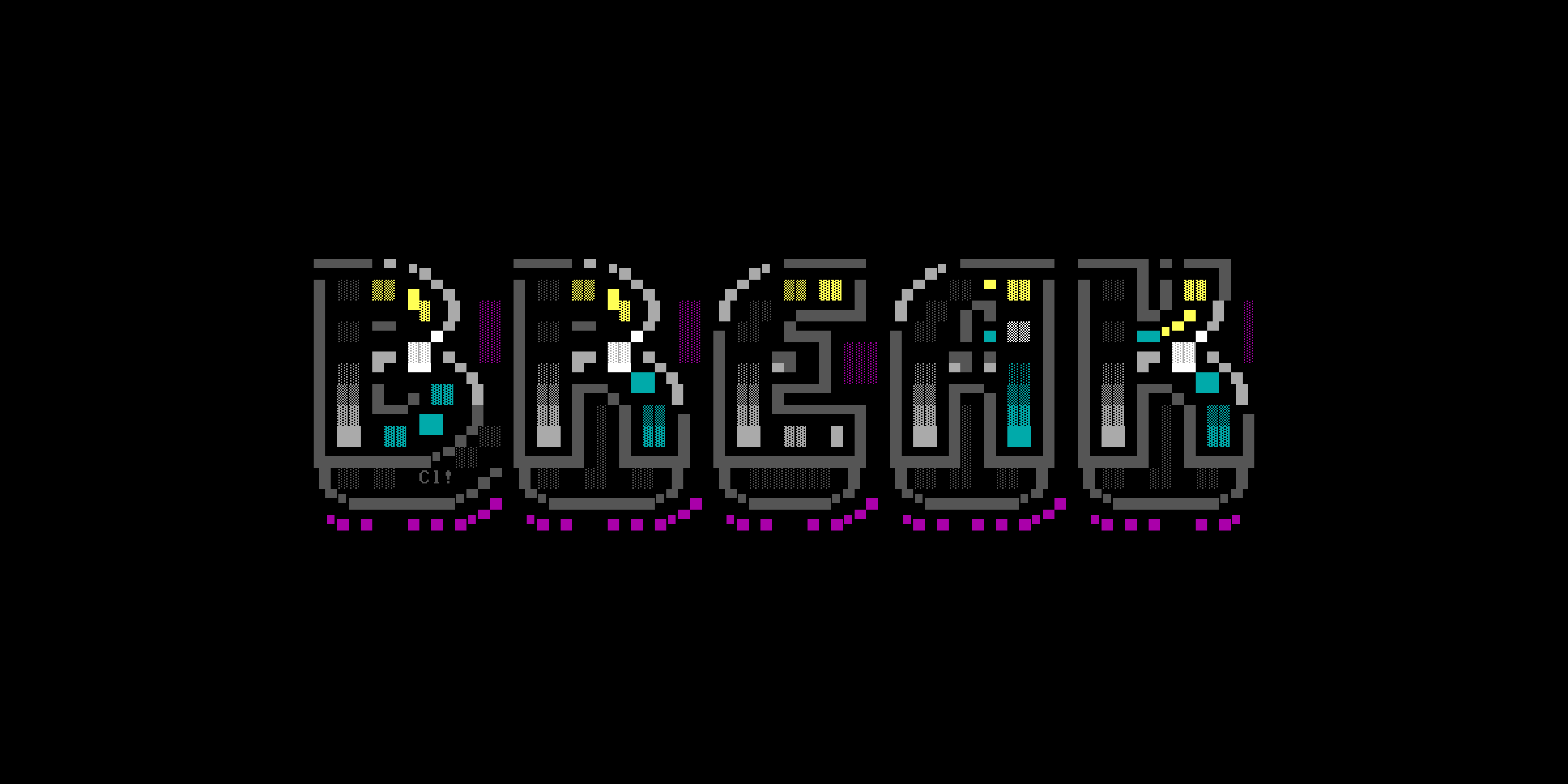
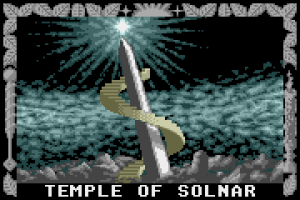
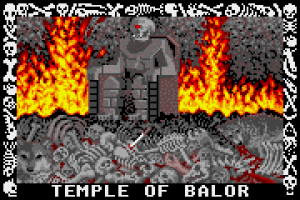
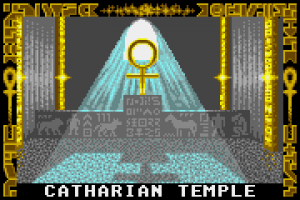
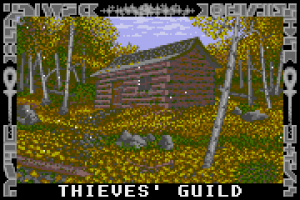
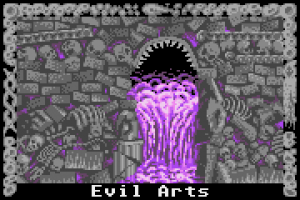
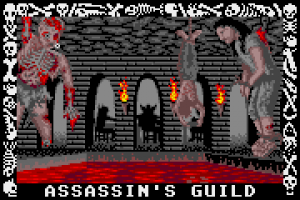
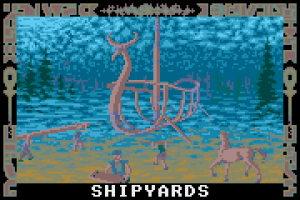
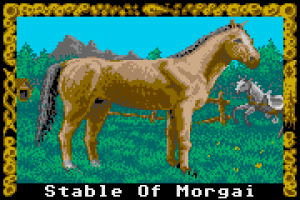
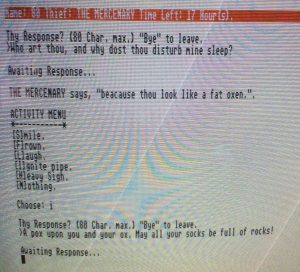

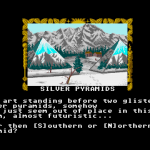
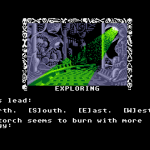
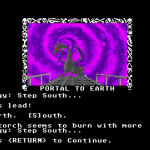
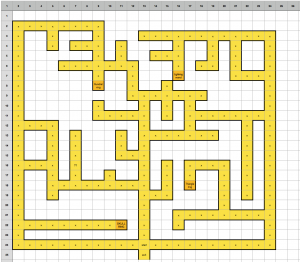
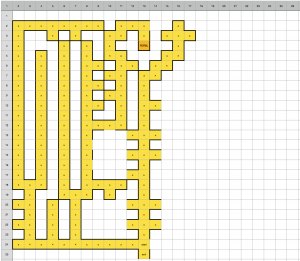
Share your thoughts!